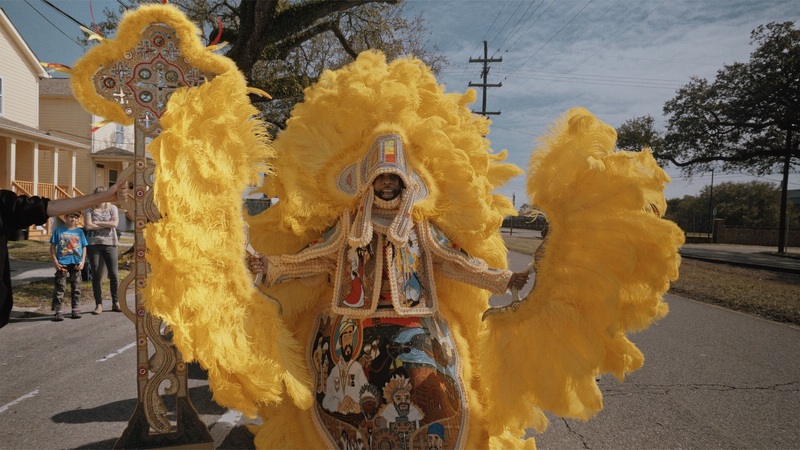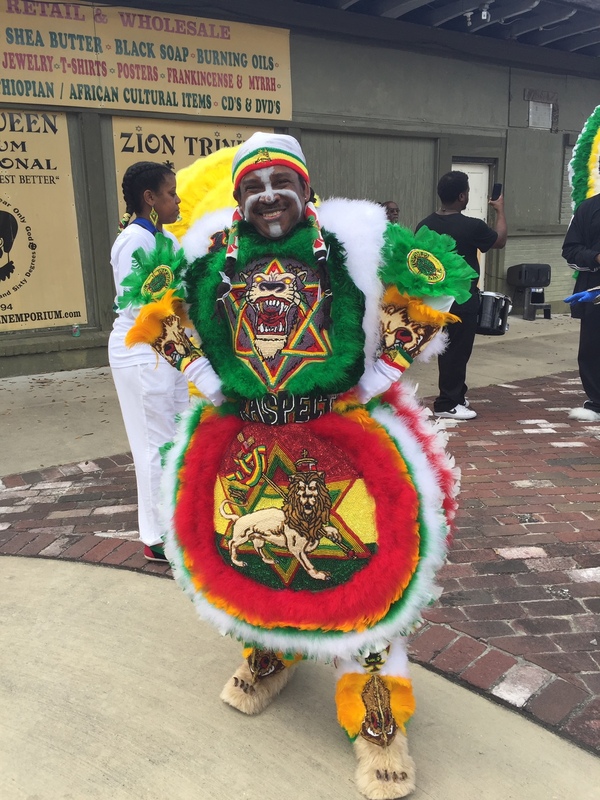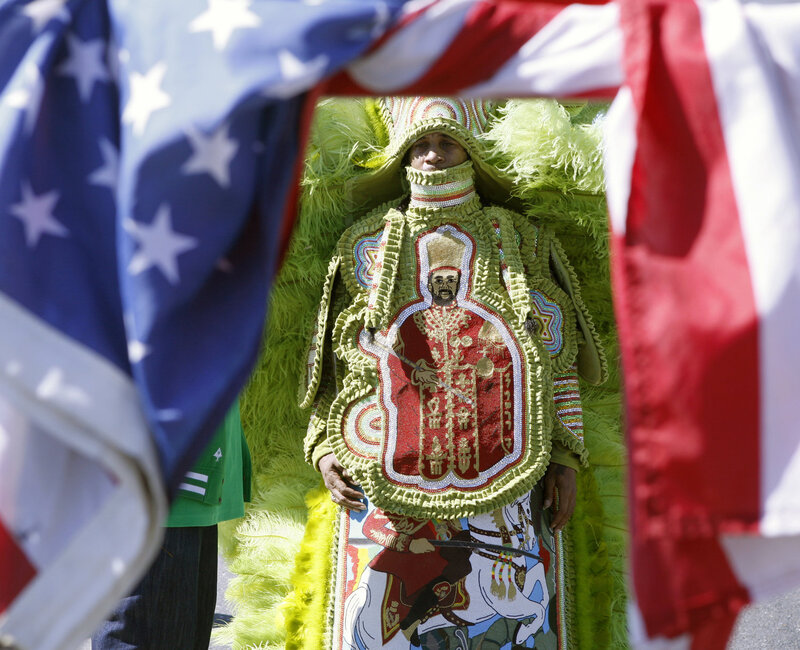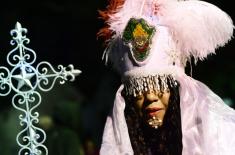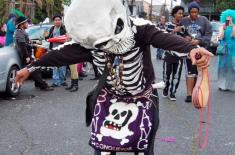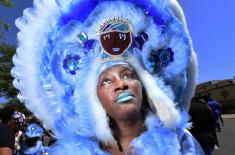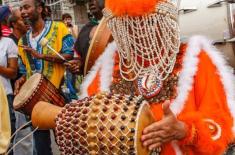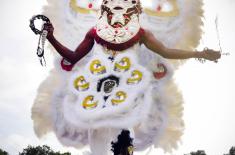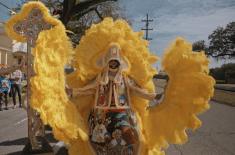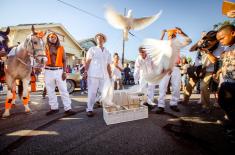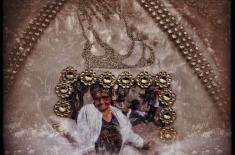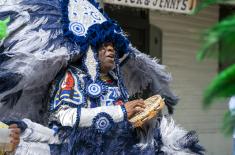Rastafarianism
Mystery in Motion: African American Spirituality in Mardi Gras
Rastafarianism is a political and religious movement that began in Jamaica in the early 1930s. Responding to the legacy of enslavement and colonial domination, Black Jamaicans envisioned Ethiopia and its savvy and successful emperor, Haile Selassie, who ruled from 1930 to 1974, as fulfillment of biblical prophecies for independent African rule and African divinity. A central tenet is repatriation from the oppressive West, called Babylon, to an African ancestral home, which followers called Zion. This pan-African movement spread globally, in part because of the popularity of its signature music, reggae, beginning in the 1970s.
Selassie visited New Orleans, deep in the Jim Crow South, while on an official tour of the United States in 1954. At city hall Mayor deLesseps “Chep” Morrison, who supported segregationist policies even as he sought Black political favor, gave the emperor a royal welcome and made him an honorary citizen of New Orleans. During his visit, Selassie made it clear that the recent United States Supreme Court’s Brown v. Board of Education decision calling for the desegregation of public schools was an important step in social justice.
While New Orleans was fascinated with Selassie, it is his role as spiritual inspiration to Blacks around the world that would speak to later generations. Demond Melancon, a practicing Rastafarian and Big Chief of the Young Seminole Hunters, has built a trio of suits focused on Ethiopia, Haile Selassie, and his empress, Menen Asfaw, starting with his 2010 suit, titled Haile Selassie, worn as a Spy Boy for the Seminole Hunters. His 2018 suit, called Ethiopia, sports a number of people and spiritual sites from that country. Melancon’s 2020 suit, Jah Defender, highlights the late Saint Croix reggae artist Akae Beka, a well-known follower of Selassie and creator of hypnotic reggae.
Eric Burt’s 2017 suit reflects his spiritual transformation from embracing the Rastafarian religion. The suit contains the Ethiopian and Rasta colors: red, gold, and green, with the iconography of the “Conquering Lion of Judah,” which refers to Selassie’s official title, His Imperial Majesty the King of Kings of Ethiopia, Conquering Lion of the Tribe of Judah, Elect of God. Burt sees the sewing process as spiritual; he prays while he beads, creating a meditative zone. The local Rastafarian community and other masking Indians praised the Conquering Lion of Judah suit.
Mystery in Motion: African American Spirituality in Mardi Gras
Online Exhibition
